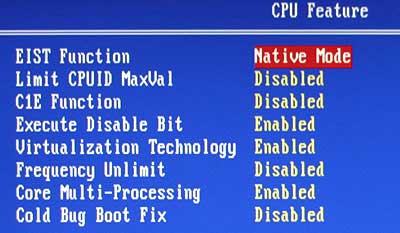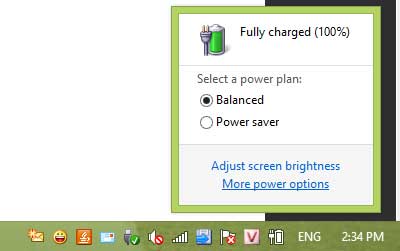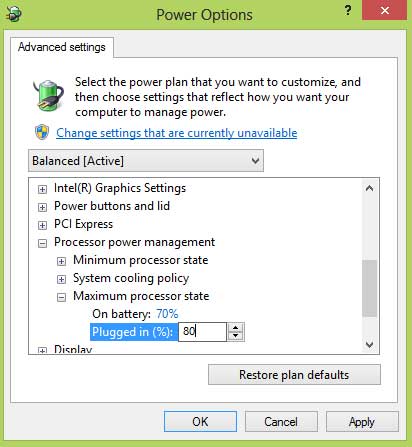5 simple ways for efficient laptop heat dissipation
Laptop heat dissipation is not a new issue, but it is essential to ensure a laptop's longevity. However, due to the specific design so now in addition to the initiative of hardware manufacturers, there are still very few effective thermal solutions for laptops.
Good heat dissipation for laptops will reduce the risk of "die" on discrete graphics chips or CPUs, especially for some laptops with high "death" probabilities because of poor heat dissipation or poor hardware usage.

In this article, we will share with you some simple and easy-to-implement laptop cooling solutions:
1. Manually fix yourself
First of all, when choosing to buy a laptop, choose laptops that have an efficient and convenient cooling system. In addition, the following points should be noted:
- The cooling system must not let the heat on the mouse hand.
- Do not arrange the radiator system close to the battery, as the temperature will quickly reduce the battery life.
- The cooling system operates at CPU clock and operates smoothly, even in conditions of CPU / GPU operating at maximum clock speeds such as watching HD movies, video editing, game playing, 3D graphics processing, .
If you have already bought a laptop, there is a simple, yet effective way, that is, to raise the surface under the computer, can use a rack or simply put a book as shown in the following section, to give The surface under the laptop is well ventilated, making the system heat dissipation better.

However, this is not always effective, as it depends on the available cooling system.
2. Use a separate heat sink base
Currently on the market there are many types of heat sinks for laptops, with many models and different prices. When shopping for a separate heat sink, pay attention to the efficiency and practicality of your laptop with the following notes:
- The fan cooling system in the base must be able to absorb heat from the laptop, meaning the wind direction is backward rather than blowing into the laptop.
- On the laptop side, there must be burrs to avoid slipping the laptop when used, as most of the heat sinks have slanted sides and smooth surface.
- Don't trust the manufacturer about the integrated technology on the heat sink! You must directly experience and choose for yourself the right equipment and efficient heat dissipation.

Advantages: Easy to implement because of available solutions, external heat dissipation should not affect much on system performance.
Disadvantages: Pretty cumbersome and inconvenient to move, it takes extra cost for heat sinks. In addition to using the source (via USB port), it will affect the battery life for the laptop when not plugged in.
3. Self-mod removable cooling system
Recently on technology forums, some of you have created a lot of heat dissipation for laptops, but the general requirement is that you have to have a certain experience and try to find the best heat dissipation solution for only me. Also, remember that the cooling principle for a laptop is " suck in and out" rather than doing the opposite.

Advantages: The dispersion efficiency is better than the solution using a commercially available heat sink (if done well) and proactive.
Disadvantages: In addition to the disadvantages similar to the above removable thermal solution, this solution also takes time to learn and manufacture, easy to lose aesthetic because of bulky (unless well designed).
4. Interfering from the BIOS
Some dedicated laptops support reducing the pulse right in the laptop's BIOS to cool the chip, Intel also has the technology to adjust clock speeds according to the need to keep the machine running cool and less power-hungry such as Dynamic Acceleration Technology (DAT), Enhanced Intel SpeedStep Technology (EIST) or Intel Turbo Boost, AMD also has similar solutions.

However, there are almost no customizations in the BIOS of laptops, most of them are set up automatically and are less likely to be manually intervened in the BIOS, except for some specially designed models.
Advantages: The point of this method is the built-in CPU and the driver is completely automated, so we do not need manual intervention.
Disadvantages: This technology is only available on certain CPUs, but it doesn't always work as well as the manufacturer's winged marketing words.
5. Direct interference from Windows
There is a very gentle intervention right in Windows, which is to reduce the machine clock through the option in the power management section of the machine. Please add, most laptops currently on the market are well configured, and rarely do users take full advantage of CPU processing power, so reducing clock speeds when used for office tasks or applications Universal use will not affect the performance of the machine for work. In return, your computer will function smoothly, cool and less battery consuming.
- To do this, first click on the battery / charge alert icon in the system tray as shown below and select More Power Options.

- In the Power Options window that appears, in the power management package (plan) you are using (for example, I am using Balanced (recommended)), select Next Change plan settings> Change advanced power settings and will show a Power Options panel .
- In this table, in the drop-down list corresponding to the active profile (active) you click on the Processor power management section there will be 3 processor statuses.
- Now we need to consider the Maximum processor state section, set at 70-80% corresponding to the time of battery usage and charging time for the mid-range Core i3 processor, ie adjust the clock (as well as the processing capacity) at 70-80% of the machine's default maximum capacity.

- Then click OK or Apply to save the settings. From now on, your device will function smoother and cooler. You can verify directly by senses or through software like Everest .
Of course, when rendering 3D, video editing, playing 3D games or handling tasks that require a lot of computing power, you should switch to normal mode, to return the default clock for the machine.
Advantages: Reduce noise, cool the phone and save battery. In addition, this way is easy to set up and actively intervene, because operations are handled visually on Windows, without additional costs.
Disadvantages: Reduced computer performance, ineffective gaming or heavy graphics / video / computing tasks (which require high clock speeds).
These are 5 simple, easy-to-implement and quite effective thermal solutions for your laptop. Hope this article will be useful to you.
You should read it
- How to prevent heat for laptops effectively
- Top 8 best heat sinks for laptops
- Processing effective heat dissipation fan for Laptop V2, there must be a temperature clock with only 60,000 VND
- Choose cooling equipment for summer laptops
- 'Relieve heat' for laptops with Thermaltake's Massive 14² heat sink CL-N001-PL14BU-A
- Liquid heat sink
- What is CPU heat sink and how does it work?
- Why is high-grade nickel-plated heat sink even though it is inferior to copper and aluminum?
May be interested
- See the new face of the MacBook Pro Retina
 lg has just introduced a new ultrabook called z935. this ultrabook uses intel haswell processor, 13-inch screen with high resolution and two microsd card slots.
lg has just introduced a new ultrabook called z935. this ultrabook uses intel haswell processor, 13-inch screen with high resolution and two microsd card slots. - 5 ways to use the scanner effectively
 to contribute to 'prolonging life' for scanners, you should preserve the glass surface, limit the scanning beyond the capacity, start the machine in the correct order ...
to contribute to 'prolonging life' for scanners, you should preserve the glass surface, limit the scanning beyond the capacity, start the machine in the correct order ... - Lenovo upgraded Intel's ThinkPad E line to the latest chip
 lenovo recently upgraded to haswell chip for laptops for thinkpad e series businessmen, besides nvidia discrete graphics card. the two models of thinkpad e440 and e540 will be sold in the near future with prices of 860 usd and 834 usd respectively.
lenovo recently upgraded to haswell chip for laptops for thinkpad e series businessmen, besides nvidia discrete graphics card. the two models of thinkpad e440 and e540 will be sold in the near future with prices of 860 usd and 834 usd respectively. - Lenovo launched the ThinkPad W540 15.5-inch screen
 lenovo recently launched a new thinkpad: thinkpad w540, with the highlight being the most screened device in their thinkpad line.
lenovo recently launched a new thinkpad: thinkpad w540, with the highlight being the most screened device in their thinkpad line. - Dell launched the Inspiron 11 laptop using Haswell chips
 dell has introduced a new low-cost laptop from the inspiron line called inspiron 11 in the 3000 series with special support from haswell processor and running the latest windows 8.1 operating system.
dell has introduced a new low-cost laptop from the inspiron line called inspiron 11 in the 3000 series with special support from haswell processor and running the latest windows 8.1 operating system. - Outstanding laptop sold in September
 market in september has more mid-range models using core i 4th generation chips from dell, lenovo or asus with attractive prices from only 10.5 million.
market in september has more mid-range models using core i 4th generation chips from dell, lenovo or asus with attractive prices from only 10.5 million.






 Processing effective heat dissipation fan for Laptop V2, there must be a temperature clock with only 60,000 VND
Processing effective heat dissipation fan for Laptop V2, there must be a temperature clock with only 60,000 VND Make your laptop's heat sinks super simple
Make your laptop's heat sinks super simple Should we buy laptop heat sink base?
Should we buy laptop heat sink base? What is a heatsink on a phone?
What is a heatsink on a phone? How to prevent heat for laptops effectively
How to prevent heat for laptops effectively